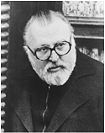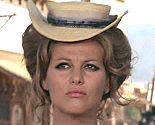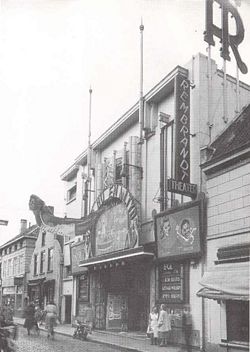User: Scherpschutter: Difference between revisions
No edit summary |
No edit summary |
||
| Line 283: | Line 283: | ||
* (1) http://www.manataka.org/page129.html http://www.lasculturas.com/aa/vs_EdithYaqui.htm | * (1) http://www.manataka.org/page129.html http://www.lasculturas.com/aa/vs_EdithYaqui.htm | ||
* (2) http://western-maniac.forum-pro.fr/les-films-vos-avis-vos-documents-f1/les-cent-fusils-1968-tom-gries-t1434.htm?highlight=les+100+fusils - See the post by '''JO''', he has made a | * (2) http://western-maniac.forum-pro.fr/les-films-vos-avis-vos-documents-f1/les-cent-fusils-1968-tom-gries-t1434.htm?highlight=les+100+fusils - See the post by '''JO''', he has made a scan of the article on Raquel Welch. According to the article, Welch had a brief affair with Spanish actor Sancho Gracia (his name is misspelled as Garcia). | ||
Revision as of 16:44, 9 October 2010
- Position: Editor
My Reviews:
- Ace High
- A Genius, two partners and a dupe
- A Man called Sledge
- A Pistol for Ringo
- A Stranger in Paso Bravo
- A Stranger in Town
- Ace High Review
- Adios Gringo
- A Long Ride from Hell
- Alive or preferably Dead
- Among Vultures
- And God said to Cain
- Any Gun Can Play
- Arizona Colt
- Death Rides a Horse
- Death Sentence
- Don't wait Django, shoot!
- Django
- Django Shoots First
- Django, the Last Killer
- Durango is coming, pay or die
- Sartana kills them All
- Scalps, venganza india
- Seven Guns for the MacGregors
- Seven Winchesters for a Massacre
- Shalako Review
- Silver Saddle Review
- Some Dollars for Django Review
- Sonny and Jed / La Banda J&S
- Starblack
- Sukiyaki Western Django
- Take a Hard Ride
- Taste for Killing
- Taste of Death (Quanto costa morire) (with Silver Wolf)
- Tepepa
- The Deserter
- The Forgotten Pistolero
- The Gatlin Gun / Machine Gun Killers
- The Grand Duel
- The Great Silence
- The Hellbenders
- The Hills run red
- The Hunting Party
- The Long Day of the Massacre
- The Man from Oklahoma
- The Mercenary
- The Moment to Kill
- The Price of Power
- The Ruthless Four (Ognuno per sé)
- The Specialists
- The Stranger Returns
- The Taste of Violence / Le Goût de la Violence
- They call me Trinity
- This Man Can't Die
- Tierra Brutal / The Savage Guns
- Treasure of Silver Lake
- Trinity is still my Name
- Today It's Me... Tomorrow It's You
- Two Mules for Sister Sara
- Scalps, venganza india Review
- Vengeance is Mine / One hundred thousend Dollars per Killing
- Villa Rides Review
- Wanted
- What am I doing in the Middle of the Revolution
- Winnetou the Warrior (Winnetou I)
- Winnetou und das Halbblut Apanatschi
- Winnetou: Last of the Renegades (Winnetou II)
- Winnetou: Thunder at the Border (Winnetou und sein Freund Old Firehand)
- Winnetou III : The Desperado Trail
DVD Reviews:
- Django - Unbarmherzig wie die Sonne DVD Review
- Long Days of Vengeance (German X-Rated Kult DVD)
- For a Few Dollars More MGM S.E. DVD Review
- Fort Yuma Gold DVD Review (Wild East)
- Navajo Joe DVD Review (Wild Side)
- Pistoleros DVD Review (Wild East)
- Sartana’s here… trade your pistol for a coffin DVD Review (French SNC/GroupeM6)
- Silver Saddle Koch Media DVD Review
- Tempo di Massacro DVD Review
- The Man from Nowhere DVD Review (Wild East)
- Vengeance Trail DVD Review
Other articles:
Introduction (with Lindberg)
Essays
GHOSTS AND AVENGERS, from Shakespeare & Leone, to Eastwood & Garrone
Johnny Hamlet (Shakespearian Review)
Tony Anthony - A Stranger at Home
     
| |
|
THE CINEMAS OF MY YOUTH
Chicago Theatre – Eindhoven
Chicago was the most fashionable cinema of Eindhoven. Most blockbusters premiered here. The cinema was build in 1913 but renovated several times; the most important renovation took place in 1945, immediately after the war, when the theatre got a new façade, a very high one without windows. This façade was used as some kind of giant advertising pillar. On the other side of the shopping street was a warehouse with a restaurant on the third or fourth floor. Once they had attached a gigantic 007 to the façade and from my seat near the window I looked him right in the eye. The name of the movie was written (in Dutch) above his head: You only live Twice. I asked my mother what this was supposed to mean. Did you live twice? Only twice? She had no idea. Remarkably, the theatre was composed of two separate buildings, one with the ticket office and the entrance hall, and another where the films were actually shown; they were connected by a long corridor with a foyer, a small bar and a series of show windows with info on films that were expected to be on the program soon. Walking through this beautiful corridor gave you the idea you were part of the beau monde. It had 833 (very comfortable) seats. It wasn’t the largest cinema in town, nor was the one with the largest screen. But it was the first cinema in Holland with stereo sound (guess why) and until 1980, when the second building (where the films where shown) was completely destroyed in a fire, it was known as one of Holland’s finest cinemas and the one with the best sound. Westerns were a rarity in the Chicago Theatre, still I saw my first western here: Mackenna’s Gold. I guess it was during a Christmas or Easter holiday, since the cinema was loaded with boys of my age, and a Titanic scale agitation broke out when Julie Newmar took off her clothes and jumped into the water. I also saw my first spaghetti western in this theatre, the chopped-up version of Once upon a Time in the West.
Rembrandt Theatre Eindhoven
The Rembrandt theatre was, so to speak, the direct opposite of the Chicago theatre: the most ‘popular’ cinema of Eindhoven. It was also the largest: it had 1300 seats, but they were far less comfortable than the seats in Chicago. Still it always felt good to watch a movie here. There were no attendants telling you to be quiet or to put out your cigarette. Not that I ever smoked, a true fan won’t ever do that in cinema, but you really had the idea everybody was welcome here. I saw Return of Ringo, my second spaghetti western, and For a Few Dollars More in this theatre, along with several other spaghetti and non-spaghetti westerns. The cinema was known for their rather flashy painted boards above the entrance, showing scenes of the movie. I remember Death rides a Horse was shown here, and when I close my eyes I still see the enormous painting with the Dutch title ‘De Dood kwam te Paard’, which sounded, like the English title, quite bizarre, but was therefore the most beautiful title of a movie I had ever heard of. The problem was I wasn’t allowed to see it: it had an ’18 rating’ and I was only thirteen or fourteen years old. In 1960 the owner bought the adjacent premises (the building right of the theatre on the photo) for a second cinema. This cinema was smaller but offered more comfort, and was called ‘Select’. It was intended for art house movies and European (mainly Italian and French) mainstream cinema, but occasionally a western was shown here. I saw both The Wild Bunch and The Mercenary in the Select theatre in the early seventies (both must have been reruns because I was too young for them when they were first released), and the uncut version of Once upon a Time in the West was also shown for the first time in Eindhoven in this theatre. Both Rembrandt and Select were transformed in a multiplex cinema in the mid-seventies. This complex was closed down thirty years later and replaced by apartment building. The world is falling apart.
Cinema Parisien Eindhoven
Like the Select theatre, this Dutch Cinema with a French name (it means ‘Parisian Cinema’) was intended for commercially less interesting films, but it was used for this purpose only for a brief period and soon became a typical ‘popular cinema’, which exclusively programmed comedies and action movies. In spite of all this it still had attendants in uniform who showed you to your place and became very angry when someone dared to take another (more expensive) seat after the film had started. It was in this cinema that I witnessed how the operator stopped the movie because one of the visitors refused to put out his cigarette. I think the movie was A Few Dollars for Django, but I’m not sure. I remember the incident better than the movie. I saw only a handful of spaghettis in this theatre during their regular program, but among them are Vamos a Matar, Compañeros (my first Corbucci) and The Good, the Bad and the Ugly. Still this is the theatre I identify most with the genre because of their midnight showings of spaghetti westerns in the 70s. I must have seen more than twenty spaghettis during these showings, which also offered me the chance to pick up movies I wasn’t allowed to see ten years before, such as Death rides a Horse. There were nearly always a few drunks in the audience, and occasionally the atmosphere was as heated among them as it was on the screen. Cinema Parisien was rather small, it had only 350 seats. On the photo you can see the façade in the middle on the right, somewhere between the elephant (a toyshop) and Tik Tak (a bar). The photo was taken in 1977. When you look left of 'the elephant', you can spot the modern multiplex Rembrandt building, openened shortly before. Cinema Parisien was one of the last ancient cinemas that resisted the modern plague: like many old timers it was renovated in the 70s (the number of seats was brought back to 271) but while other cinemas underwent a complete metamorphosis, Cinema Parisien more or less kept his old classic style. It was finally closed in 1998.
Metropole Theater Eindhoven
The Metropole theatre belonged to a different, family-owned corporation, the City group. They owned three cinemas: Plaza (blue movies), Studio M (arthouse) and Metropole, their largest theatre, always struggling to rival Chicago, and never really successful in that aspect: people simply seemed to prefer Chicago to Metropole, probably because it was located in a more inviting part of town. Metropole was located near the train station, where the town centre virtually ended. The small shop next to the cinema (on the right, under the Telegraaf publicity sign) was a sex shop, which also might have hurt the cinema’s prestige. The Metrople theatre had 1194 seats, had the largest wall-to-wall screen in town, and boasted with a sound system that was told to be more powerful than the prestigious sound system of the Chicago theatre. It was definitely louder. Watching a movie in Metropole was quite an experience. In the seventies they were on the national News when a few lamps were vibrated loose during the showing of the sensurround movie Earthquake (luckily it wasn’t a very popular movie, so nobody was hurt). Metropole showed a variety of movies, ranging from mainstream European cinema to Hollywood classics and action movies. My first experience with the loudness of the theatre was Spartacus. I saw two Leone movies here: A Fistful of Dollars and (on another rerun) Once Upon a Time in the West. I also saw (on yet another rerun) The Wild Bunch in all it’s thunderous wall-to-wall bloody glory. The Metropole was build in 1958 (previously the Otten family had owned another cinema, called City, hence the name of the corporation) and closed its doors in 1986, but the building was only demolished in 1993. Today a modern multiplex building called Pathé has taken its place. A few years ago I watched Once upon a Time in the West in one of their cinemas on a Tuesday night.
My Latest Review

| |
Cast:
Director:
Music:
|
100 Rifles
Not so long ago, I read a few sore comments on this movie in an article called ‘Movies that Time forgot’. 100 Rifles was credited for being the first major Hollywood production to offer an interracial sex scene, but otherwise it was called a forgettable outing with only few redeeming qualities, such as scene in which the film’s heroin takes a public shower under a water tank. But like most Hollywood westerns shot in Spain in the late sixties, it has been re-evaluated in recent years, and time seems to have been kind to 100 Rifles. It’s actually one of the better Spaghetti-influenced Hollywood westerns of the period.
The film is set in the Northern Mexican region of Sonora, at the beginning of the Twentieth Century, against the background of an ethnic cleansing by the Mexican government. Most of the Yaqui Indians have already been deported to Southern regions (where they were used as slaves and many of them would perish because of working conditions and local diseases), but small groups are continuing to resist subjugation (1). The story is about a black deputy sheriff from Arizona, who accidently becomes involved in their rebellion, when he crosses the border with Mexico to capture a half breed Yaqui Indian, who has robbed a bank and bought one hundred rifles with the loot of $ 6.000, in order to arm his people. The federal army is trying to clean the region from Yaqui Indians, under the pretext that their presence has been slowing down the works on the railroad. The black American is very reluctant to join the Yaqui in their fight against the federales (to begin with he never liked Indians), but falls for their fiery red-headed leader, played by no other than Raquel Welch.
Although the film has its share of shortcomings, it’s hard to understand why it has been neglected for such a long time. It is fast-paced, offers several well-staged action sequences (notably an assault on a train), and stars three attractive actors, two at the peak of their popularity, the third rising to stardom. Brown seems not particularly interested (like his character, deputy Lyedecker, who’s constantly telling us that the Yaqui rebellion is not his business), but Welch really gives her best as the fiery rebel leader. The part nevertheless seems a bit beyond her as an actress, and it’s Burt Reynolds who easily steals the film as the half breed (his mother was Yaqui, his father from Alabama …). Fernando Lamas is also very good as the sadistic general, entrusted with the assignment to clean the region from Indians. His part basically is an extended cameo, but note that in Spanish the movie is named after his character: El Verdugo !
The historic background suits the movie very well, although the script never gets to the bottom of the conflict. General Verdugo has been given a German advisor, who proposes some radical solutions for the ‘Yaqui problem’ (these hints at extermination seem a little anachronistic), and there’s also a representative of the Southern Pacific Railroad, who’s appalled by Verdugo’s drastic measurements, but still wants the works on the railroad to continue. There are some similarities to Zapata westerns, especially those of Sergio Corbucci. It features a beautiful woman alongside two rivaling macho men - one attached to a cause, the other only to himself – and also uses some familiar locations (notably the station from Compañeros) and faces from Italian westerns, such as Aldo Sambrell and José Manuel Martin (as Welch’s father in the opening scene). But the spaghetti westerns certainly weren’t the only source of inspiration. In one prolonged scene Brown and Reynolds are shackled to each other like Sidney Poitier and Tony Curtis in The Defiant Ones (1958, Stanley Kramer). There are several other hints that the film also tried to say something about racial prejudice, but this aspect is never elaborated. Ironically, racial prejudices seemed to have caused some problems on the set.
According to an article in a French magazine, Brown and Welch didn’t like each other. Welch thought Brown was insupportable and she was pissed of that he was top-billed, Brown thought Welch was prejudiced against black people and had expected him to behave like an Uncle Tom who was prepared to kiss her feet. Welch also had a bad time with her husband, who was on the set, when it came out that she was having an affair with one of the Spanish extras, who was subsequently fired (2). The ‘sex scene’ involving the two, which gave some notoriety to the movie, seems rather tame today, but the other (in)famous moment, Raquel taking a public shower, is still quite spectacular. And so is the movie, in spite of some obvious flaws. The story offers too many cliché situations (a fistfight near a cliff, several narrow escapes etc.), and there are also a few sudden transitions and other anomalies, probably caused by 20th Century Fox' decision to re-edit the material against director Gries and screenwriter Huffakers wishes. But it’s an eventful movie and the action scenes are well-handled and remarkably violent for a western predating The Wild Bunch by a year. Jerry Goldsmith’s rousing score will stay with you for days, and oh yes, before I forget: the film also stars Soledad Miranda and unlike La Welch, she appears nude. This movie certainly is worth watching.
Notes:
- (2) http://western-maniac.forum-pro.fr/les-films-vos-avis-vos-documents-f1/les-cent-fusils-1968-tom-gries-t1434.htm?highlight=les+100+fusils - See the post by JO, he has made a scan of the article on Raquel Welch. According to the article, Welch had a brief affair with Spanish actor Sancho Gracia (his name is misspelled as Garcia).
-- By Scherpschutter







